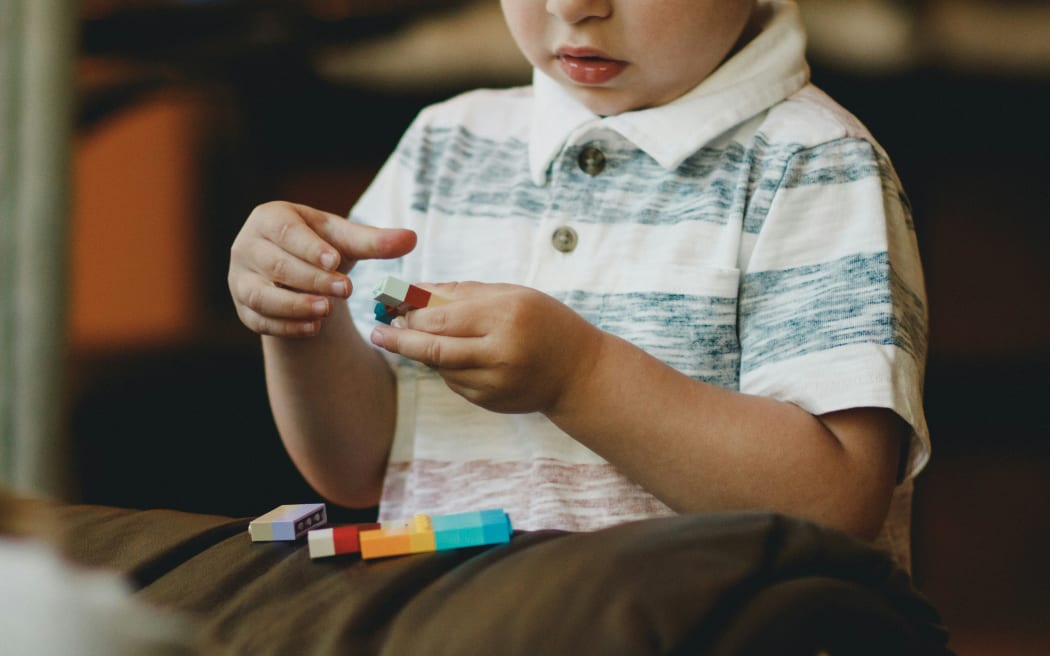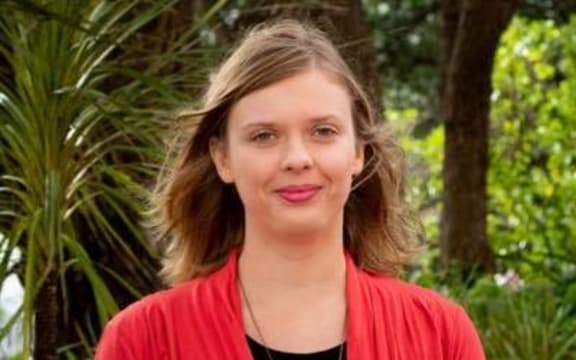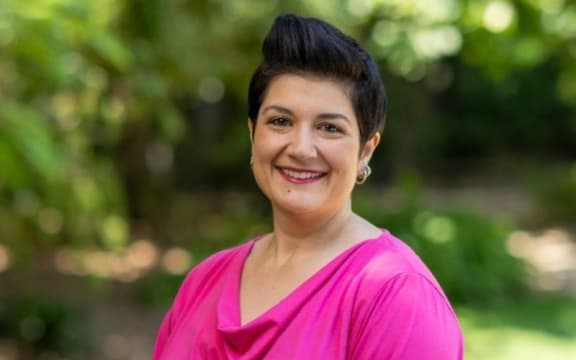
Early signs of autism are often missed, with the average diagnosis not happening until children are around 6-and-a-half. Photo: Unsplash
A first of its kind one-to-one support programme for pre-school children showing signs of autism is about to be trialled in Wellington, with aspirations of going nationwide.
Professor Josie Barbaro pioneered the most successful tool in the world for the very early detection of autism. Known as Social Attention and Communication Surveillance (SACS), it identifies 96 percent of autistic children by preschool age. Barbaro also devised the ASDetect app for parents.
Dr Hannah Waddington, lead of the Victoria University of Wellington Autism Clinic, is rolling out Raupī te Raupō - a world-first free support programme for under 5s who, having undergone SACS assessment, were showing signs of autism - even if they were yet to be diagnosed officially.
Barbaro recently helped train more than 300 health and education professionals in the Wellington region to identify early signs of autism.
"We really don't want to be waiting for that diagnosis to provide support," Waddington told RNZ's Saturday Morning.
"So instead, those children identified by those professionals that we trained who are showing signs of autism get referred directly to our clinic, with the hope that we'll be providing support to them much sooner."
Waddington said early signs of autism were often missed, with the average diagnosis not happening until children were around 6-and-a-half, despite parents picking up signals around the age of 3.
"Many children can be reliably diagnosed perhaps even around the age of 2, and a lot of children are showing those signs around 1. So the fact that you know, those concerns even from parents are coming a lot later and then the diagnosis is coming way after that, it's a real big problem and we could be doing so much better.
"I think there's so many layers to this, and one of them is that lack of knowledge of signs of autism amongst those professionals who most frequently interact with their child. So that's exactly why we're trying to train, you know, Plunket nurses, early childhood educators, GPs, all those people who frequently interact with the child to be able to identify those signs earlier."

Hannah Waddington. Photo: Hannah Waddington / X
SACS began to form when Barbaro was doing her PhD nearly two decades ago.
"There were a lot of screening tools out there for autism, but they were all very inaccurate or they missed a lot of autistic children," she told Saturday Morning.
"So I set out to develop a method where we could train our primary health professionals - so in Australia, that's our maternal child health nurses; in New Zealand, it's your Plunket and Tamariki Ora nurses.
"I developed a series of checklists between 1 and 2 years of age where there were particular social attention and communication behaviours that we know are different in autistic children. I developed training for these nurses - it was about half a day, and we trained over 200 nurses and they screened over 22,000 children with this during their 12-, 18- and 24-month checks, and it ended up being the most accurate tool for the early identification of autism with an accuracy at the time of 81 percent."
As it has been refined, SACS has improved. Barbaro's 2022 paper Diagnostic Accuracy of the Social Attention and Communication Surveillance-Revised With Preschool Tool for Early Autism Detection in Very Young Children, published in journal JAMA Network Open, claimed a 96 percent success rate by the age of four.
"Back when I first started, the focus was very heavily on promoting the development of children. And of course, that's still absolutely important because we know the earlier that we can provide supports and services for children, the better their cognitive outcomes, the better their everyday life skills and the less stress there is on the family because they know why their child's different.
"But what we're also finding now is that research is showing that the earlier that children know that they are autistic, that they are different and not disordered or bad, then the better mental health outcomes. So it's really important that parents, families and children know that they have a different brain, they have an autistic brain and that's no less than any other brain. It's just a different brain."
Between 1 and 2 years of age, there are five social behaviours parents, educators and health professionals were looking out for: eye contact, pointing, imitation, response to their name and gestures.
"If a child is not showing three of five behaviours, then they're at an elevated likelihood of being autistic," she said, noting that no screening tool could ever be 100 percent effective but SACS comes close.
"It's not only accurate, but it's also very sensitive. It picks up the majority of autistic kids. And the important thing to note is that the remaining children, they're not typically developing - they have developmental or language delays, so they also benefit from being identified early as requiring supports and services."
Concerned parents can use a free app on their phones called ASDetect, developed by Barbaro.
"There are a lot of parents who are quite scared to take that initial step to go to their doctor and say, 'I'm concerned about my child'. So it gives them the opportunity to monitor their child's development at home, in the comfort of their own home, and then decide what to do next when they receive those results."
Waddington said the New Zealand early screening programme was developed "from the ground up alongside autistic people and alongside Māori", and was ready to be rolled out "at a much larger scale".
She said the current system was "overloaded", leaving kids waiting sometimes more than a year for a diagnosis - missing out on supports that require a diagnosis first.
"Many services in New Zealand don't have a diagnostic barrier, although some do so. For example, the Ministry of Education should be providing support to children based on need rather than a diagnosis that I know that they may or may not have.
According to the Ministry of Education's website a child does not need a formal diagnosis in order to access support.
"And in our clinic, one of the most important things to us is that we don't have a diagnostic barrier for our service. We're an early support service, so we simply wouldn't be seeing enough children if we required that diagnosis in order for them to be able to access it.
"So for us, all we need is for that child to be showing sufficient signs of autism on that SACS tool … that family will be going through the diagnostic process. They may or may not be diagnosed eventually. In fact, we know that some children showing signs won't end up having an autism diagnosis."

Josie Barbaro. Photo: Josie Barbaro / LinkedIn
But neurodivergences often appear together, she said, so any child they see might require support anyway, even if they were not autistic.
"If you've got that different brain in one kind of way, you might have it in another kind of way, too."
Autism diagnoses have increased markedly in recent decades, which Barbaro put down to not just improved understanding of the condition, but also recent changes in the rules around diagnosis.
"The co-occurrence of autism and ADHD is 80 percent and above, and so we literally were not allowed to diagnose autism and ADHD in the same person until 2013, when our manual changed. And so, you know, that's pretty crazy. That's only 11 years ago. So there is an entire generation of children and adults who were diagnosed as only ADHD when in fact, they were both.
"And so that's why I get quite frustrated when people say, oh, you know, 'Tik Tok and social media and all the rest of it is what is causing the increase'. But actually, it's because of all of these changes in our manuals. It's because of increased awareness and a lot of our ADHD are now being diagnosed as also autistic."
Waddington said there was a move towards "being more affirming of autistic brains" rather than treating it simply as a disability.
"We don't want to have all of the same kind of brains because we have a lot of different tasks, a lot of different ways to be successful and things that need to be done in society.
"So for me, I think the idea of difference is beautiful, but I also have heard from autistic people that it's very important not to think that difference washes away what's difficult, or challenges, right? So I think a real misconception about this move towards difference is that there can't also be a huge area of need or of support, and that things sometimes can't be hard for autistic people.
"You know, there's a lot of anxiety or mental health issues perhaps because the systems in society aren't set up for them. So I think it's really beautiful to embrace those differences and also acknowledge that the need for support, the need for society to change is still there."

